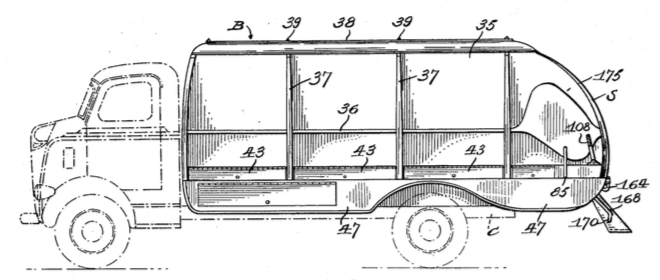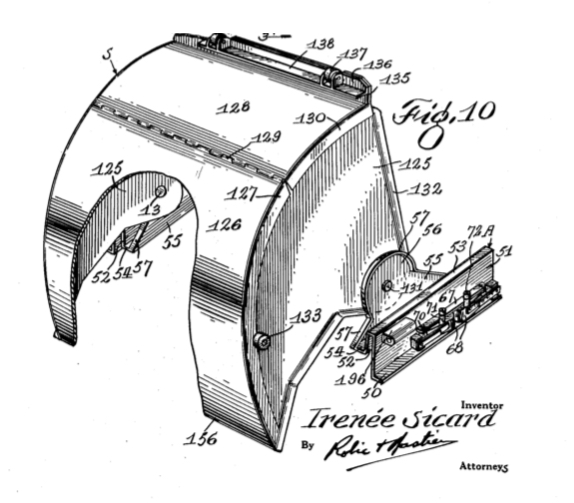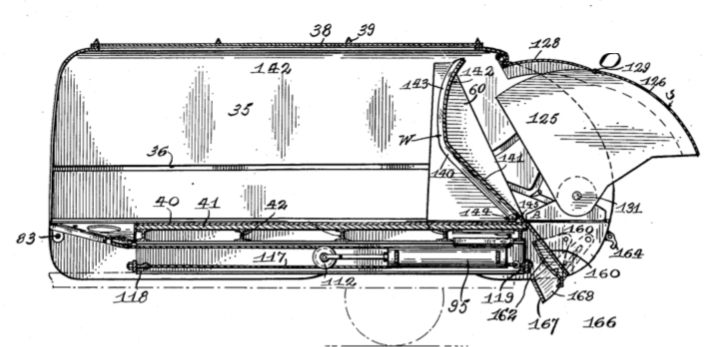
Like any good entrepreneur, Sicard may have been inspired to enter the refuse truck business by the appearance of Load-Packers in great numbers in Montreal, that city being an early fleet buyer of the famous Gar Wood refuse packer. Irénée Sicard, also of Montreal and son of the founder, filed a patent for a rear loading refuse collector in 1943, (see illustration) assigning it to Arthur Sicard. At a time when factories were engaged in war production, it is unlikely that more than a handful, if any of these were ever built. Irénée Sicard's 1943 design is a noteworthy in that it featured ejection unloading by means of moveable partition within the body, the first time such a feature was proposed on a rear-loading refuse truck in North America. This track-guided, angled ejector panel very much resembled the type commonly used on modern designs. The ejector was powered by a hydraulic cylinder acting against fixed cables through pulleys. This arrangement, sometimes called a "reeving hoist", doubled the effective stroke of the cylinder. The reeving hoist was a common to early hydraulic dump trucks, and was used to operate the trough on the Colecto side loader. Modern trucks use them for overhead hoists on rear load container lift systems, as well as on roll-off bodies. 
Detail of the track-guided loading and packing scoop, with cut-away This early design had one more distinct feature, a multi-angled guideway to control the scoop movement (via guide rollers) within the hopper area. This method of controlling the movement of the packing panel was later used with much success by Cyril Gollnick on his in his famous Leach Packmaster five years later. Unfortunately, no images of the first Sicard refuse loader have yet been found, the forerunner of the truly revolutionary Sicard Sanivan which would debut around 1945. 
Loading scoop open, and ejector rearward to discharge load. Reeving cylinder (under floor) and cables control movement
SELECTED PATENTS
|